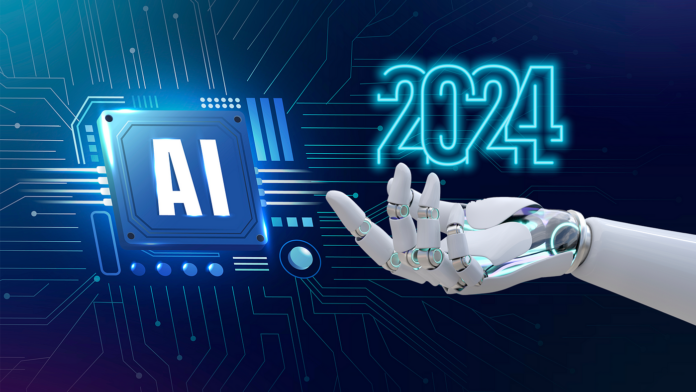2024 is going to be even more incredible considering the velocity at which AI is evolving. Building on the phenomenal progress of the last couple of years, artificial intelligence now has become the frontline of technology innovation, influencing almost every sector from healthcare and finance to education and entertainment. The article gives insight into some of the major trends underlying the future of artificial intelligence in 2024 and new developments, along with their possible consequences for our world.
Key Trends
Explainable AI (XAI)
As artificial intelligence systems find their way into more and more critical decision-making mechanisms, explainable AI is growing in importance. In 2024, much emphasis will fall on transparency and understandability for AI algorithms to establish accountability and trust. XAI gives clear and interpretable insight into how decisions are made by AI models. For instance, transparency is highly required in healthcare and financing sectors, where the decisions need to be justified and audited. In understanding the decision process, stakeholders can ensure that the AI functions fairly and efficiently, thus enhancing greater acceptance and trust by stakeholders in the AI technologies.
Artificial Intelligence in Healthcare
The role of artificial intelligence in healthcare only continues to rise as diagnostics, medicine tailored to suit individual needs, and patient care are undergoing major overhauls. By 2024, we have AI-driven tools that can predict diseases way ahead in advance, tailor treatments based on the genetic profile of individuals, and improve patient monitoring by wearable technologies. These innovations can only mean better outcomes for patients and more efficient, accessible healthcare. For instance, AI algorithms can accurately interpret medical images, spotting abnormalities, therefore, hidden from human vision. Individual treatment plans trained from AI analyses of genetic material drive greater clinical outcomes, while wearable sensors enable real-time health monitoring, whereby patients and doctors are alerted in case any potential problematic occurrences may happen.
Ethical AI and Governance
As artificial intelligence systems pervade, so urgently, ethical AI and robust governance frameworks secure the prime position, where in 2024 tighter regulations and guidelines will be in place to ensure that issues pertaining to AI development and use are responsibly handled, including bias, privacy, and ethical implications of AI being at the top of the agenda of policymakers, technologists, and ethicists. But the acceptance and trust of AI systems have to be essentially based on the assurance that they will not perpetuate the existing biases or infringe the prescriptions of privacy rights. Ethical guidance and clear governance structures in this regard help to allay such concerns and promote the responsible use of AI.
AI and Cybersecurity
An area of importance that remains in the limelight during 2024 is the convergence of AI and cybersecurity. Since artificial intelligence shall be instrumentally applied basically in both a defensive and offensive AU for combating cyber threats, it shall be very helpful. On the other hand, threat detection and response capabilities are improved, making the systems resilient against any attack. On the other hand, threat actors turn to AI for the next generation of cyber threats, which will be with sophisticated countermeasures. AI-driven cybersecurity solutions help in analyzing huge data in order to find patterns and anomalies indicative of cyber threats, enabling quicker and more effective responses. However, considering AI is equally adopted by cybercriminals, the cybersecurity environment becomes an arms race of continuous innovation and vigilance.
AI in Creative Industries
Major disruptions brought about by AI in creative industries involve AI-generated art, music, and literature taking center stage in mainstream culture. By 2024, AI tools facilitate experimenting at the furthest boundaries of creativity among artists, musicians, and writers alike, opening paths to profound new modes of expression and collaboration. These are technologies that democratize creativity, allowing more people to get involved in the creative process. Artificial intelligence can write music tracks, make visual art, and also write literature that will inspire and arm human creators with new tools. The collaboration of human and machine thinking augments creative output and opens new frontiers in expressions of art.
Quantum AI
Quantum computing is evolving, and its integration with artificial intelligence, what we call Quantum AI, is the trend to watch in 2024. Quantum AI will resolve highly complex problems that at this moment do not have solutions using classical computers. If developed, this could mean a sea change in areas like cryptography, material science, and simulations of complex systems, enabling innovation in a number of ways. Quantum AI makes use of the principles stated for quantum mechanics in processing information that includes radically new ways, thus allowing for substantially faster and more powerful computations than are possible using traditional methods.
Treading between Innovation and Responsibility: Trends in AI—2024
To state, AI technology was rapidly developing and deeply integrated into areas of our lives in 2024. From ensuring transparency and ethical governance to improvements in healthcare and cybersecurity, its effect is far-reaching and multifarious. Balancing innovation and responsibility directly places this dynamic area of issues in a landscape where AI works as a force for good in the service of society, advancing it in meaningful and equitable ways. The future of AI is less related to technological advancement than the fostering of collaborative and ethical approaches towards harnessing its potential. It is in this prioritization of responsible development and use that we can hermetically seal the fact that artificial intelligence will proceed in a good way, leading to positive change and social progress.

